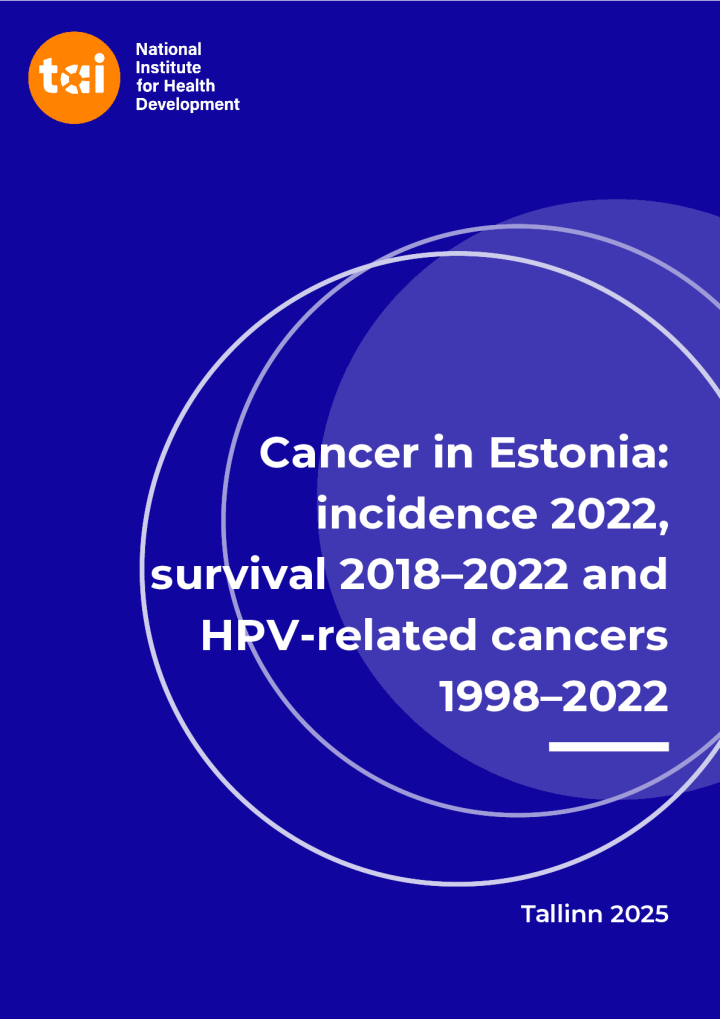Cancer in Estonia: incidence 2022, survival 2018–2022 and HPV-related cancers 1998–2022
Owing to internationally recognised population-based cancer registry, Estonian cancer incidence data are available for more than 50 years – since 1968. Over time, the annual number of new cancer cases has increased significantly. A total of 9,196 new cancer cases were registered in Estonia in 2022, with 4,563 cases diagnosed in men and 4,633 in women. Leading cancer sites in men were similar to previous years – the prostate (29% of all cancers in men) followed by non-melanoma skin (12%) and lung (11%). In women, the leading sites were the breast and non-melanoma skin (both 20% of all new cancer cases).
The increase in cancer cases is partly due to the ageing of the population – about half of all cases in 2022 were diagnosed in patients aged 70 years and older. Among women aged 54 and younger, cancer incidence was lower than among men in the same age group; however, from age 55 onwards, cancer incidence in men was remarkably higher than in women. Cancer is relatively rare in children and adolescents – in 2022, 21 cases of malignant tumours were diagnosed in children aged 0–14, and 147 new cases in the 15–34 age group.
In addition to cancer incidence and survival, this report focused on cancers related to human papillomavirus (HPV). HPV causes cancers of oropharynx, oral cavity, anus, larynx, vulva, vagina, cervix uteri and penis. The total number of cancers of these sites has increased in Estonia during 1998–2022. The role of HPV in cancer development can be characterised by the attributable fraction, which is interpreted as the proportion of disease that could be eliminated if the exposure to risk factor were eliminated. The internationally estimated attributable fraction of HPV varies by cancer site from 4% in oral cavity to 100% in cervical cancer. Based on the attributable fraction of HPV, the estimated annual number of cancer cases attributable to HPV has increased in men from 27 to 41 cases, whereas two thirds of the latter estimate are oropharyngeal cancers. In women, the overall number of cancers attributable to HPV has been declining since 2012 due to the decrease in cervical cancer cases. However, the number of oropharyngeal cancers has nearly quadrupled, and anal cancers doubled.
In 2018–2022, over 60% of cases of cervical and oropharyngeal cancer were diagnosed in in people younger than 60 years.
The long-term declining trend of cervical cancer incidence since 2012 (nearly 6% per year) can be associated with the preventive effect of the screening program. Improving the effectiveness of HPV vaccination program could help prevent more than 200 cancer cases in Estonia every year.
